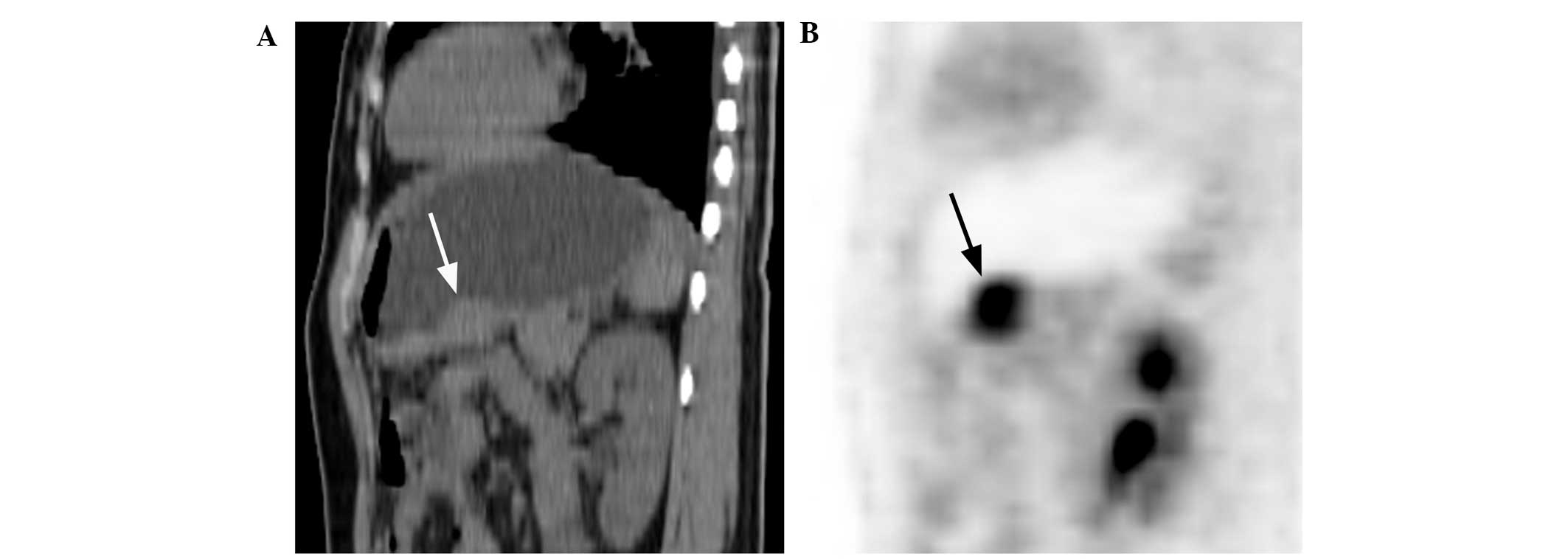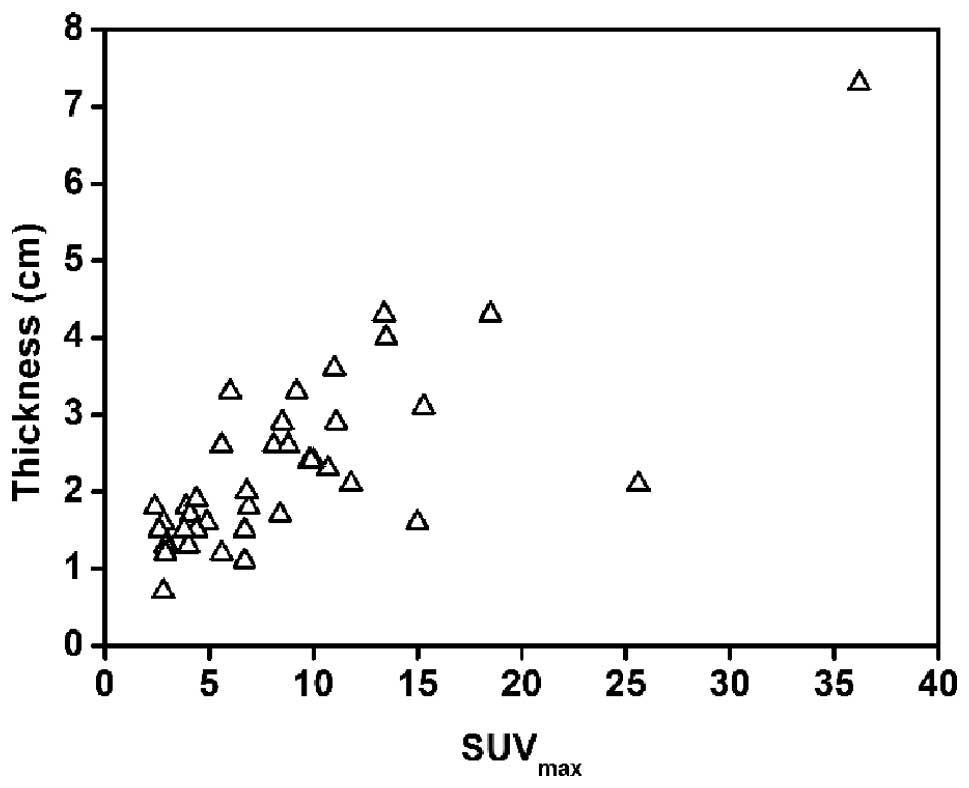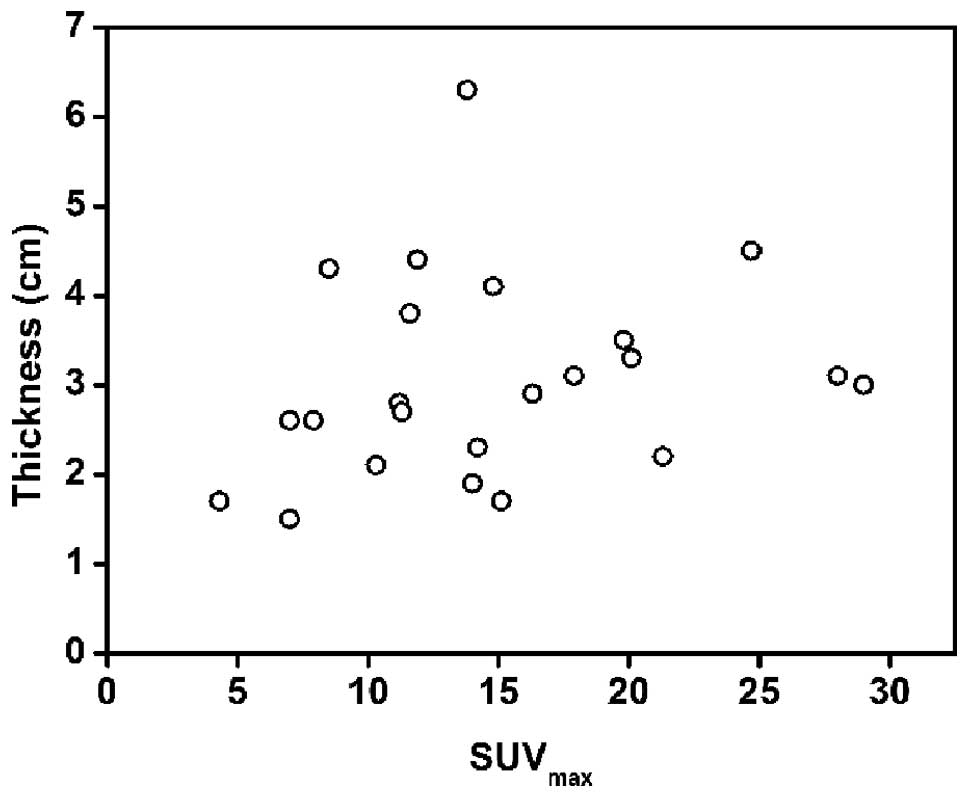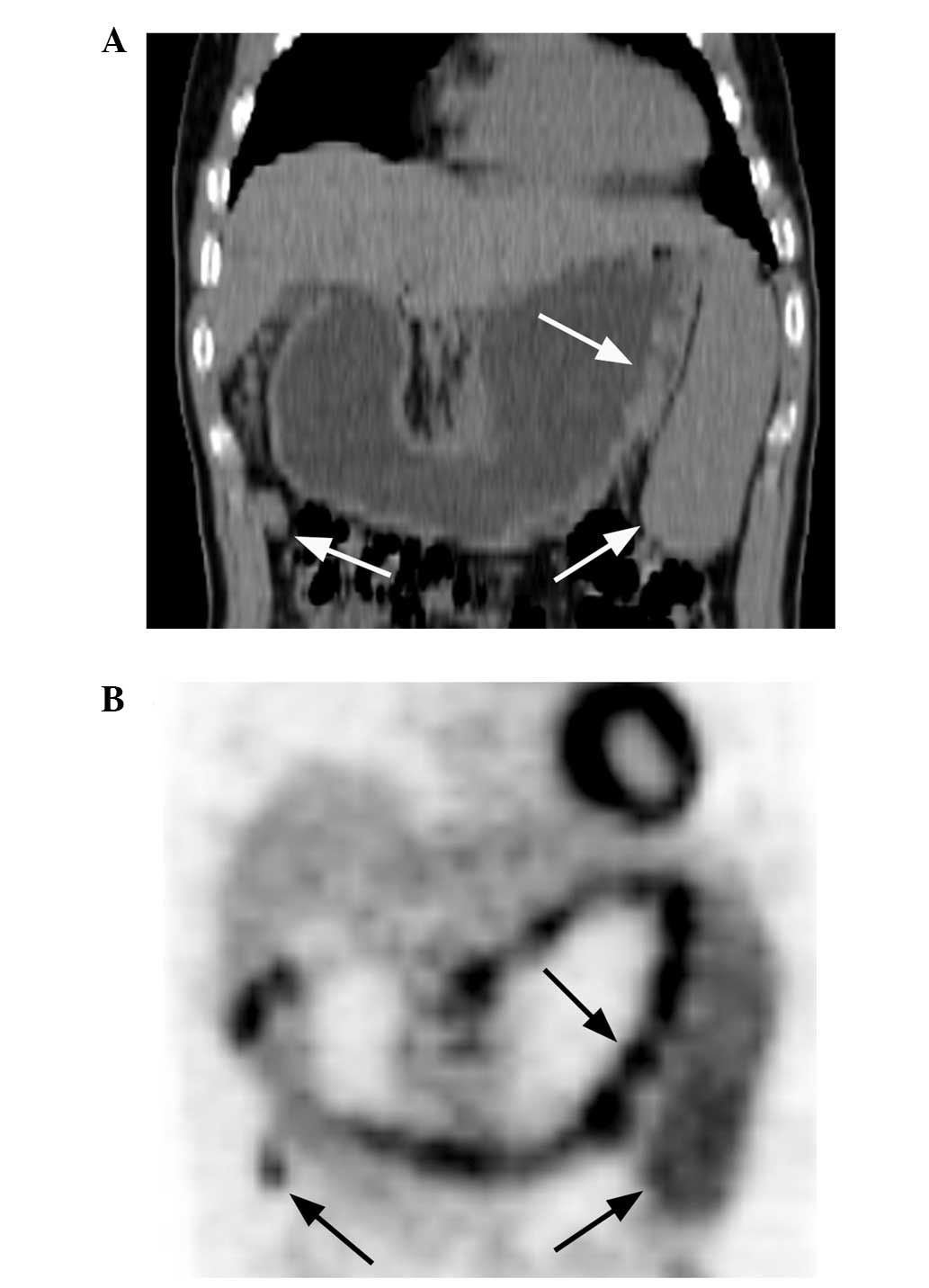|
1
|
Kumar R, Xiu Y, Potenta S, et al: 18F-FDG
PET for evaluation of the treatment response in patients with
gastrointestinal tract lymphomas. J Nucl Med. 45:1796–1803.
2004.
|
|
2
|
Radan L, Fischer D, Bar-Shalom R, et al:
FDG avidity and PET/CT patterns in primary gastric lymphoma. Eur J
Nucl Med Mol Imaging. 35:1424–1430. 2008.
|
|
3
|
Chihara D, Oki Y, Ine S, et al: Primary
gastric diffuse large B-cell Lymphoma (DLBCL): analyses of
prognostic factors and value of pretreatment FDG-PET scan. Eur J
Haematol. 84:493–498. 2010.
|
|
4
|
Rodriguez M, Ahlström H, Sundín A, et al:
[18F] FDG PET in gastric non-Hodgkin’s lymphoma. Acta Oncol.
36:577–584. 1997.
|
|
5
|
Iwaya Y, Takenaka K, Akamatsu T, et al:
Primary gastric diffuse large B-cell lymphoma with orbital
involvement: diagnostic usefulness of 18F-fluorodeoxyglucose
positron emission tomography. Intern Med. 50:1953–1956. 2011.
|
|
6
|
Song KH, Yun M, Kim JH, et al: Role of
F-FDG PET scans in patients with Helicobacter
pylori-infected gastric low-grade MALT lymphoma. Gut Liver.
5:308–314. 2011.
|
|
7
|
Shahani S, Ahmad A, Barakat FH, et al:
F-18 FDG PET/CT detecting thyroid plasmacytoma after the successful
treatment of gastric large B-cell lymphoma. Clin Nucl Med.
36:317–319. 2011.
|
|
8
|
Ambrosini V, Rubello D, Castellucci P, et
al: Diagnostic role of 18F-FDG PET in gastric MALT lymphoma. Nucl
Med Rev Cent East Eur. 9:37–40. 2006.
|
|
9
|
Takada M and Yamamoto S: Gastric
follicular lymphoma with mediastinal lymph node dissemination
detected by FDG-PET. Endoscopy. 42:862010.
|
|
10
|
Liu JD, Tai CJ, Chang CC, Lin YH and Hsu
CH: FDG-PET in a patient with gastric MALT lymphoma. Acta Oncol.
45:750–752. 2006.
|
|
11
|
Hirose Y, Kaida H, Ishibashi M, et al:
Comparison between endoscopic macroscopic classification and F-18
FDG PET findings in gastric mucosa-associated lymphoid tissue
lymphoma patients. Clin Nucl Med. 37:152–157. 2012.
|
|
12
|
Sharma P, Suman SK, Singh H, et al:
Primary gastric lymphoma: utility of 18F-fluorodeoxyglucose
positron emission tomography-computed tomography for detecting
relapse after treatment. Leuk Lymphoma. 54:951–958. 2013.
|
|
13
|
Yi JH, Kim SJ, Choi JY, Ko YH, Kim BT and
Kim WS: 18F-FDG uptake and its clinical relevance in primary
gastric lymphoma. Hematol Oncol. 28:57–61. 2010.
|
|
14
|
Thomas E, Lenzo N and Troedson R: Gastric
and pulmonary lymphoma presenting as a solitary pulmonary nodule.
Biomed Imaging Interv J. 3:e512007.
|
|
15
|
Andriani A, Zullo A, Di Raimondo F, et al:
Clinical and endoscopic presentation of primary gastric lymphoma: a
multicentre study. Aliment Pharmacol Ther. 23:721–726. 2006.
|
|
16
|
Boot H: Diagnosis and staging in
gastrointestinal lymphoma. Best Pract Res Clin Gastroenterol.
24:3–12. 2010.
|
|
17
|
Phongkitkarun S, Varavithya V, Kazama T,
et al: Lymphomatous involvement of gastrointestinal tract:
evaluation by positron emission tomography with
(18)F-fluorodeoxyglucose. World J Gastroenterol. 11:7284–7289.
2005.
|
|
18
|
Schöder H, Larson SM and Yeung HW: PET/CT
in oncology: integration into clinical management of lymphoma,
melanoma, and gastrointestinal malignancies. J Nucl Med. 45(Suppl
1): 72S–81S. 2004.
|
|
19
|
Tian J, Chen L, Wei B, et al: The value of
vesicant 18F-fluorodeoxyglucose positron emission tomography
(18F-FDG PET) in gastric malignancies. Nucl Med Commun. 25:825–831.
2004.
|
|
20
|
Enomoto K, Hamada K, Inohara H, et al:
Mucosa-associated lymphoid tissue lymphoma studied with FDG-PET: a
comparison with CT and endoscopic findings. Ann Nucl Med.
22:261–267. 2008.
|
|
21
|
Perry C, Herishanu Y, Metzer U, et al:
Diagnostic accuracy of PET/CT in patients with extranodal marginal
zone MALT lymphoma. Eur J Haematol. 79:205–209. 2007.
|
|
22
|
Mochiki E, Kuwano H, Katoh H, Asao T,
Oriuchi N and Endo K: Evaluation of 18F-2-deoxy-2-fluoro-D-glucose
positron emission tomography for gastric cancer. World J Surg.
28:247–253. 2004.
|
|
23
|
Lim JS, Yun MJ, Kim MJ, et al: CT and PET
in stomach cancer: preoperative staging and monitoring of response
to therapy. Radiographics. 26:143–156. 2006.
|
|
24
|
Kim SK, Kang KW, Lee JS, et al: Assessment
of lymph node metastases using 18F-FDG PET in patients with
advanced gastric cancer. Eur J Nucl Med Mol Imaging. 33:148–155.
2006.
|
|
25
|
Park MJ, Lee WJ, Lim HK, Park KW, Choi JY
and Kim BT: Detecting recurrence of gastric cancer: the value of
FDG PET/CT. Abdom Imaging. 34:441–447. 2009.
|
|
26
|
Hopkins S and Yang GY: FDG PET imaging in
the staging and management of gastric cancer. J Gastrointest Oncol.
2:39–44. 2011.
|
|
27
|
Takahashi H, Ukawa K, Ohkawa N, et al:
Significance of (18)F-2-deoxy-2-fluoro-glucose accumulation in the
stomach on positron emission tomography. Ann Nucl Med. 23:391–397.
2009.
|
|
28
|
Hersh MR, Choi J, Garrett C and Clark R:
Imaging gastrointestinal stromal tumors. Cancer Control.
12:111–115. 2005.
|
|
29
|
Kamiyama Y, Aihara R, Nakabayashi T, et
al: 18F-fluorodeoxyglucose positron emission tomography: useful
technique for predicting malignant potential of gastrointestinal
stromal tumors. World J Surg. 29:1429–1435. 2005.
|
|
30
|
Yamada M, Niwa Y, Matsuura T, et al:
Gastric GIST malignancy evaluated by 18FDG-PET as compared with
EUS-FNA and endoscopic biopsy. Scand J Gastroenterol. 42:633–641.
2007.
|
|
31
|
Malle P, Sorschag M and Gallowitsch HJ:
FDG PET and FDG PET/CT in patients with gastrointestinal stromal
tumours. Wien Med Wochenschr. 162:423–429. 2012.
|
|
32
|
Kato T, Komatsu Y, Tsukamoto E, et al:
Intense F-18 FDG accumulation in the stomach in a patient with
Menetrier’s disease. Clin Nucl Med. 27:376–377. 2002.
|
|
33
|
Friedman J, Platnick J, Farruggia S,
Khilko N, Mody K and Tyshkov M: Ménétrier disease. Radiographics.
29:297–301. 2009.
|
|
34
|
Lu G, Wang Z, Zhu H, et al: The advantage
of PET and CT integration in examination of lung tumors. Int J
Biomed Imaging. 2007:171312007.
|
|
35
|
Lin KH, Chang CP, Liu RS and Wang SJ: F-18
FDG PET/CT in evaluation of pulmonary sclerosing hemangioma. Clin
Nucl Med. 36:341–343. 2011.
|
|
36
|
Dong A, Dong H, Wang Y, Gong J, Lu J and
Zuo C: MRI and FDG PET/CT findings of hepatic epithelioid
hemangioendothelioma. Clin Nucl Med. 38:e66–e73. 2013.
|
|
37
|
Kitajima K, Suzuki K, Senda M, et al: FDG
PET/CT features of ovarian metastasis. Clin Radiol. 66:264–268.
2011.
|























